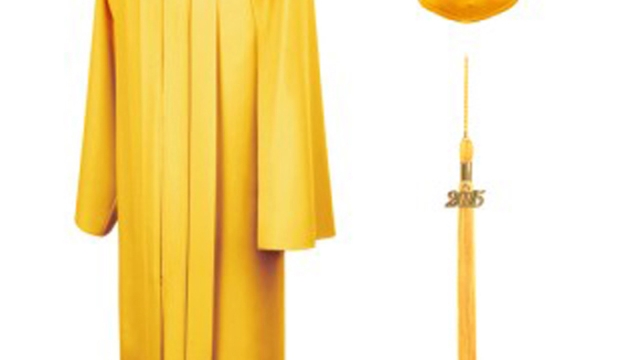Graduation caps and gowns hold a significant place in the tradition and symbolism of academic achievement. These timeless garments not only mark the culmination of years of hard work and dedication, but they also carry a deep sense of pride and accomplishment. For both graduates and onlookers, the sight of colorful caps and flowing gowns evokes a sense of anticipation and celebration, as students prepare to embark on their next chapter in life.
These iconic ensembles trace their origins back to the medieval times, where robes were worn as a symbol of academic prestige and scholarly pursuits. Today, they serve as a visual representation of the scholarly community and the pursuit of knowledge. From the distinguished black gowns traditionally worn by bachelor’s degree recipients to the vibrant hood colors representing different fields of study, each element of the cap and gown is steeped in symbolism and tradition.
As graduation day approaches, students eagerly anticipate the moment when they will don their caps and gowns, ready to cross the stage and receive their diplomas. The weight of the fabric, the familiar feel of the mortarboard, and the tassel swinging in unison with each step become cherished memories associated with this rite of passage. Graduation caps and gowns not only unite graduates in a shared experience, but they also serve as a visual reminder of their academic journey and the culmination of years of hard work and perseverance.
In this guide to graduation caps and gowns, we will explore the history, symbolism, and etiquette surrounding these iconic garments. Whether you are a soon-to-be graduate, a family member or friend, or simply curious about the significance behind this time-honored tradition, join us on a journey through the rich symbolism and traditions that make graduation caps and gowns a cherished symbol of academic success.
History and Evolution of Graduation Caps and Gowns
Graduation caps and gowns have a rich history that spans several centuries. These iconic symbols of academic achievement have evolved over time, reflecting the changing customs and traditions of graduation ceremonies.
In the early days, the use of academic robes can be traced back to medieval Europe. Scholars and clergymen often wore long robes as a mark of their profession, and this practice eventually extended to students as well. The robes were typically made of plain, dark-colored fabric and were designed to be modest and understated.
Over time, the style and significance of graduation attire began to evolve. In the 12th century, hoods were added to the robes, which helped indicate the level of academic achievement or the field of study. Different colors and patterns were used to distinguish various disciplines, further adding to the symbolism of the graduation regalia.
In the 16th century, the graduation cap, also known as the mortarboard, emerged as an integral part of the academic outfit. The cap, with its distinctive flat square shape and tassel, became a symbol of intellectual pursuit. The tassel itself had its own symbolism, denoting the transition from candidate to graduate.
Throughout the years, graduation attire has continued to evolve, adapting to cultural and regional variations. Today, graduation caps and gowns are typically standardized, with specific colors and styles representing different academic degrees or institutions. They serve as a visual representation of academic accomplishment and a proud reminder of the years of hard work put into earning a degree.
Symbolism Behind Graduation Caps and Gowns
The graduation caps and gowns worn by students hold deep symbolism, representing the culmination of years of hard work and achievement. These traditional attire pieces are not merely fashion statements but serve as powerful symbols of academic success and a significant milestone in one’s educational journey.
The graduation cap, also known as the mortarboard, is a distinctive component of the graduation ensemble. Its square shape, adorned with a tassel, is instantly recognizable. The cap’s origin can be traced back to the Middle Ages, where it was worn by scholars and clergymen to indicate their learned status. Today, it symbolizes the graduate’s attainment of knowledge and academic prowess. The tassel, typically black and commonly found on the right side before the graduation ceremony, holds its own significance. As the ceremony progresses, the turning of the tassel from the right side to the left marks the official conferral of the degree.
The graduation gown, often flowing and black in color, carries its own symbolism as well. Historically, these gowns were originally worn by religious clergy and evolved into academic dress as universities were established. The black color of the gown signifies formality and solemnity, reflecting the seriousness of the occasion. The length and design of the gown may vary, but the key message remains constant: this is a momentous event celebrating academic achievement and the pursuit of knowledge.
As graduates walk across the stage, clad in their caps and gowns, they not only represent themselves but also become a part of a long-standing tradition. The symbolism behind these garments reminds us of the dedication, perseverance, and intellectual growth that have brought individuals to this significant milestone in their lives. The graduation caps and gowns unite students from diverse backgrounds and disciplines, symbolizing their shared commitment to education and the pursuit of excellence.

Modern Trends and Variations in Graduation Attire
In recent years, graduation attire has seen a surge in modern trends and variations. These contemporary styles offer graduates the opportunity to stand out and express their individuality on this special day.
One of the popular trends is the incorporation of bold colors in graduation caps and gowns. While traditional attire tends to lean towards neutral shades such as black, white, or navy blue, some graduates are now opting for vibrant hues like red, purple, or even metallic tones. This infusion of color adds a touch of excitement and personality to the graduation ceremony.
In addition to colors, another trend that has gained popularity is the customization of graduation attire. Graduates are exploring creative ways to personalize their caps and gowns, making them unique and memorable. Embroidered initials, quotes, or symbols that reflect their journey through education are just a few examples of how customization has taken center stage in graduation attire.
Los Angeles caps and gown
Moreover, modern variations of graduation attire have also seen a departure from the traditional gown and cap design. Contemporary styles may feature unconventional cuts, innovative fabrics, or even asymmetrical elements, breaking away from the conventional look. These alternative designs allow graduates to showcase their fashion-forward sensibilities without compromising the significance of the ceremony.
As graduation ceremonies continue to evolve and adapt to the changing times, it is evident that graduation caps and gowns have also evolved to mirror the contemporary tastes and preferences of the graduates. The modern trends and variations observed in graduation attire have given graduates the freedom to express their individuality while honoring the significance of their academic achievements.

